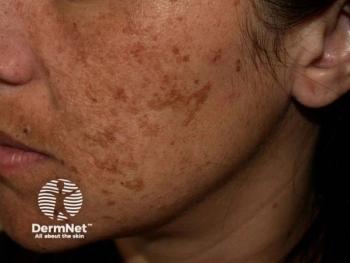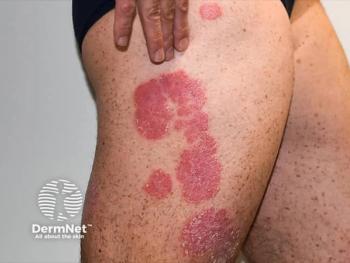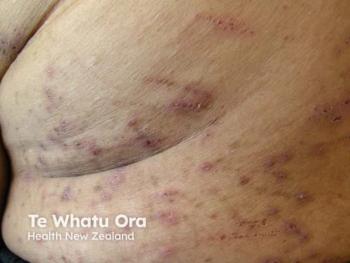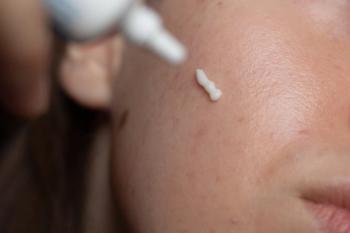
Upadacitinib Outpaces Dupilumab in Rapid AD Symptom Control
Key Takeaways
- Upadacitinib (UPA) provided faster itch relief than dupilumab (DUPI) in moderate to severe atopic dermatitis, with significant improvements seen by day 2.
- By day 28, 50.8% of UPA-treated patients achieved clinically meaningful itch improvement, compared to 29.3% for DUPI.
Discover how upadacitinib outperforms dupilumab in providing rapid itch relief for moderate-to-severe atopic dermatitis in a recent AAD study.
Atopic dermatitis (AD) continues to impose a significant burden on patients' quality of life. Among the various symptoms associated with AD, pruritus—or itch—is frequently cited as the most disruptive and distressing. Rapid relief from itch, therefore, remains a pivotal goal in the management of moderate to severe AD.
The phase 3b/4 LEVEL UP study, presented at the 2025 American Academy of Dermatology (AAD) meeting, investigates the comparative efficacy of 2 approved systemic treatments: upadacitinib (UPA), a selective Janus kinase (JAK) inhibitor, and dupilumab (DUPI), an interleukin-4 and -13 receptor antagonist.1 This head-to-head, randomized, open-label, assessor-blinded trial enrolled adolescents and adults aged 12 to under 64 with moderate to severe AD who had an inadequate response to systemic therapy or for whom such therapy was inadvisable.
“Within days following treatment initiation, a higher proportion of patients receiving UPA achieved clinically meaningful itch improvement and minimal-to-no itch than patients receiving DUPI,” researchers behind the study wrote.
Study Design and Objectives
The primary aim of the study was to evaluate rapid itch relief—specifically, within the first 28 days of treatment. Participants were randomized in a 1:1 ratio to receive either oral UPA 15 mg daily or DUPI administered per standard label. The 2 main endpoints were:
- Clinically meaningful itch improvement: Defined as a ≥4-point reduction in the Worst Pruritus Numerical Rating Scale (WP-NRS) from baseline in those with a baseline score ≥4.
- Little-to-no itch: Defined as achieving a WP-NRS score of 0 or 1 among those with a baseline score >1.
Statistical analysis employed non-responder imputation with adjustment for age and baseline disease severity (vIGA-AD score).
Key Findings
The findings consistently favored UPA over DUPI in the rapidity and proportion of patients experiencing itch relief:
- Clinically meaningful itch improvement was observed as early as day 2 with UPA. By day 10, 30.2% of UPA-treated patients had reached this threshold— a response not matched by DUPI until day 28, when only 29.3% had responded. By day 28, over half (50.8%) of patients on UPA achieved this level of relief.
- Little-to-no itch outcomes similarly favored UPA. This was first achieved by 6.6% of UPA-treated patients by day 9—nearly 20 days earlier than the 5.7% response observed with DUPI by day 28. Ultimately, 18.9% of UPA patients reached little-to-no itch by the end of the 28-day period.
Clinical Implications
These results underscore the potential of UPA to deliver faster symptomatic relief compared to DUPI in patients with moderate-to-severe AD. The earlier onset of action observed with UPA is particularly significant, as even short-term reductions in itch can dramatically improve patients' daily function, sleep quality, and emotional well-being.
It is important to note that while this study offers compelling evidence for the rapid efficacy of UPA, treatment decisions should remain individualized. Factors such as long-term safety, patient comorbidities, mode of administration, and overall treatment goals must be integrated into shared decision-making between clinicians and patients.
Researchers stated further studies may be warranted to explore long-term efficacy, safety profiles, and real-world outcomes, particularly in more diverse populations and over extended treatment durations.
Conclusion
The LEVEL UP study adds important data to the growing body of comparative effectiveness research in AD. For patients and clinicians prioritizing rapid itch relief, upadacitinib may offer a significant advantage within the first month of treatment. These findings can play a valuable role in guiding personalized therapeutic strategies in the management of atopic dermatitis.
Reference
Bunick C, Kwatra S, Lima H, et al. Rapid itch relief with upadacitinib vs dupilumab in adults and adolescents with moderate to severe atopic dermatitis: Results from the phase 3b/4 level up study. Poster presented at the 2025 American Academy of Dermatology Annual Meeting. Orlando, Florida. March 7 to 11, 2025.
Newsletter
Like what you’re reading? Subscribe to Dermatology Times for weekly updates on therapies, innovations, and real-world practice tips.


















